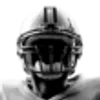Cincinnati Bengals: nfl FUTURES & BETTING ODDS

CIN
Cincinnati Bengals
0-0
Roster
Cam Taylor-Britt

Cal Adomitis

Devin Cochran

Kendric Pryor

Kwamie Lassiter

Jeff Gunter

Devin Harper

Tycen Anderson

Cordell Volson

Zach Carter

Allan George

Dax Hill

Nate Gilliam

Jay Tufele

Demetric Felton

Ja'Marr Chase

Chris Evans

Joseph Ossai

Evan McPherson

Brad Robbins

McKinnley Jackson

Kris Jenkins

Amarius Mims

Shedrick Jackson

Shaka Heyward

Jaxson Kirkland

Devonnsha Maxwell

DJ Ivey

Travis Bell

Trey Hill

Andrei Iosivas

Chase Brown

Charlie Jones

Jordan Battle

DJ Turner

Myles Murphy

Drew Plitt

Domenique Davis

Sheldon Rankins

Cody Ford

Alex Cappa

Tanner Hudson

Mike Hilton

Sidney Jones

B.J. Hill

Michael J. Thomas

Vonn Bell

Trey Hendrickson

Drew Sample

Ted Karras

Trent Brown

Jalen Davis

Mike Gesicki

Logan Woodside

Tyler Boyd

Josh Tupou

Sam Hubbard

Logan Wilson

Jackson Carman

D'Ante Smith

Cam Sample

Joe Bachie

Akeem Davis-Gaither

Markus Bailey

Tee Higgins

Joe Burrow

Orlando Brown

Clay Johnston

Zack Moss

Geno Stone

Jake Browning

Trenton Irwin

Max Scharping

Germaine Pratt

Trayveon Williams





